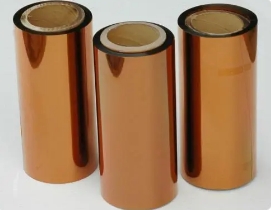- 28
- Dec
Let’s take a look at the properties of polyimide film
Let’s take a look at the properties of polyimide film
The film preparation method is: polyamic acid solution is cast into a film, stretched, and then imidized at a high temperature. The film is yellow and transparent, with a relative density of 1.39~1.45. It has outstanding high temperature resistance, radiation resistance, chemical corrosion resistance and electrical insulation properties. It can be used for a long time in the air at 250~280℃. The glass transition temperatures are respectively 280°C (Upilex R), 385°C (Kapton) and above 500°C (Upilex S). The tensile strength is 200 MPa at 20°C and greater than 100 MPa at 200°C. It is especially suitable for use as a flexible printed circuit board substrate and various high temperature resistant electrical and electrical insulation materials.

First, let’s take a look at the physical properties of polyimide film
Thermosetting polyimide has excellent thermal stability, chemical resistance and mechanical properties, and is usually orange. The flexural strength of graphite or glass fiber reinforced polyimide can reach 345 MPa, and the flexural modulus can reach 20 GPa. Thermoset polyimide has very small creep and high tensile strength. The use temperature range of polyimide covers a wide range, from minus one hundred degrees to two or three Baidu.
Let’s take a look at the chemical properties of polyimide film.
Polyimide is chemically stable. Polyimide does not need to add flame retardant to prevent burning. General polyimides are resistant to chemical solvents such as hydrocarbons, esters, ethers, alcohols and chlorofluorocarbons. They are also resistant to weak acids but are not recommended for use in strong alkali and inorganic acid environments. Certain polyimides such as CP1 and CORIN XLS are soluble in solvents. This property helps to develop their applications in spray coating and low temperature crosslinking.
